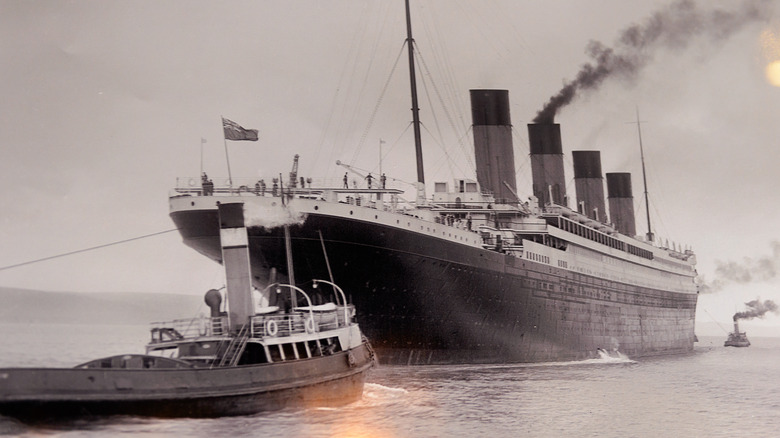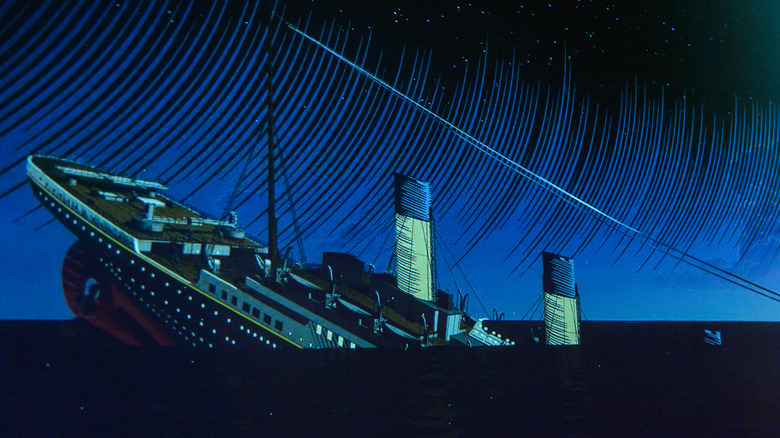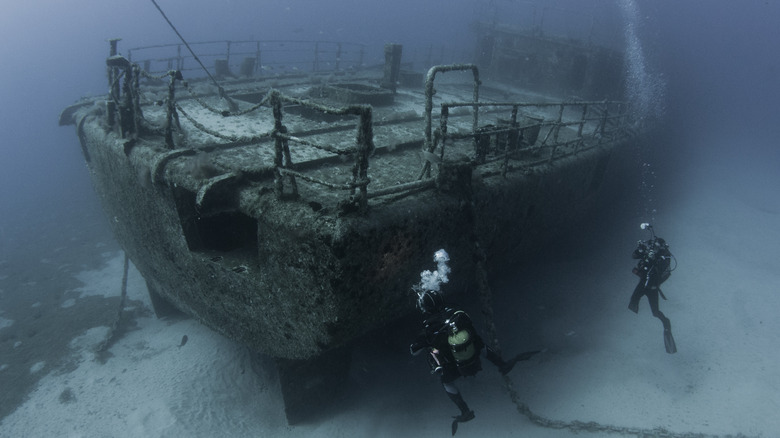The Wreck Of The Titanic Won't Last Forever. Here's Why
The tragic tale of RMS Titanic continues to capture our imaginations. Hollywood's depiction of Kate Winslet and Leonardo DiCaprio's doomed love story may have been a fabrication, but it's an enduring image; one that reflected the very real horrors so many unfortunate people faced that terrible day.
As Britannica reports, the ship sank on the morning of April 14-15, 1912, and though it's impossible to offer an exact number, it's estimated that 1,500 people died in the tragedy. It continues to be the subject of TV shows, movies, exhibitions and so much more around the world, a cautionary tale of humanity's hubris in the face of nature's power. The vice president of the White Star Line, Phillip Franklin, confidently stated that "there is no danger that Titanic will sink. The boat is unsinkable," per the BBC, but he was awfully, tragically wrong.
The shipwreck remains as a poignant and eerie memorial to those who died, but it seems that it's being eaten away in its watery home.
The wreckage of RMS Titanic was found largely by luck
According to The Vintage News, it was some time after the disaster that the wreck of the Titanic was discovered. In 1985, the University of Rhode Island's Dr. Robert Ballard was reportedly on a then-classified mission to study two sunken U.S. submarines (USS Thresher and USS Scorpion), both of which were lost in the 1960s and had nuclear equipment on board. The enormous and magnificent ship (which, per Britannica, weighed in excess of 52,000 tons) was in the region where Ballard's Argo (a small underwater craft that sent images to the surface) was searching for the submarines, and the remarkable find was made.
Today, RMS Titanic is certainly showing the effects of having spent more than a century on the seabed. In fact, researchers fear that it may disappear almost entirely, and perhaps alarmingly soon.
In August of 2019, Today reported that a series of five diving expeditions to the wreck took place. Victor Vescovo's team was horrified to discover that ravenous bacteria has been devouring the once-sturdy iron of the ship, and that the damage is truly severe.
Neither unsinkable nor uneatable, sadly
Atlantic Productions' expedition, undertaken for National Geographic Channel's documentary "Back To The Titanic," reportedly captured new footage of the wreck, and special cameras allowed for 3D modeling of the vessel. Atlantic Productions reports, however, that Titanic "is being slowly destroyed by metal eating bacteria and strong currents."
The damage, according to Lori Johnson, marine ecologist (via Atlantic Productions), is at its worst in the officers' rooms, including that of Captain Edward Smith himself. The main culprit, per Action News 5, is a bacterium that has been named Halomonus titanicae. According to the outlet, the bacteria is consuming "hundreds of pounds of iron a day," which could mean that the wreck will be entirely eroded before the end of this decade.
In 2010, the Society For General Microbiology published a piece entitled "New microscopic life aboard the RMS Titanic" (via Science Daily). It revealed that not only is Halomonus titanicae a new form of bacterium that was found on rusticles in the wreck, and may ultimately devour the ship entirely, but "the discovery reveals a potential new microbial threat to the exterior of ships and underwater metal structures such as oil rigs."


